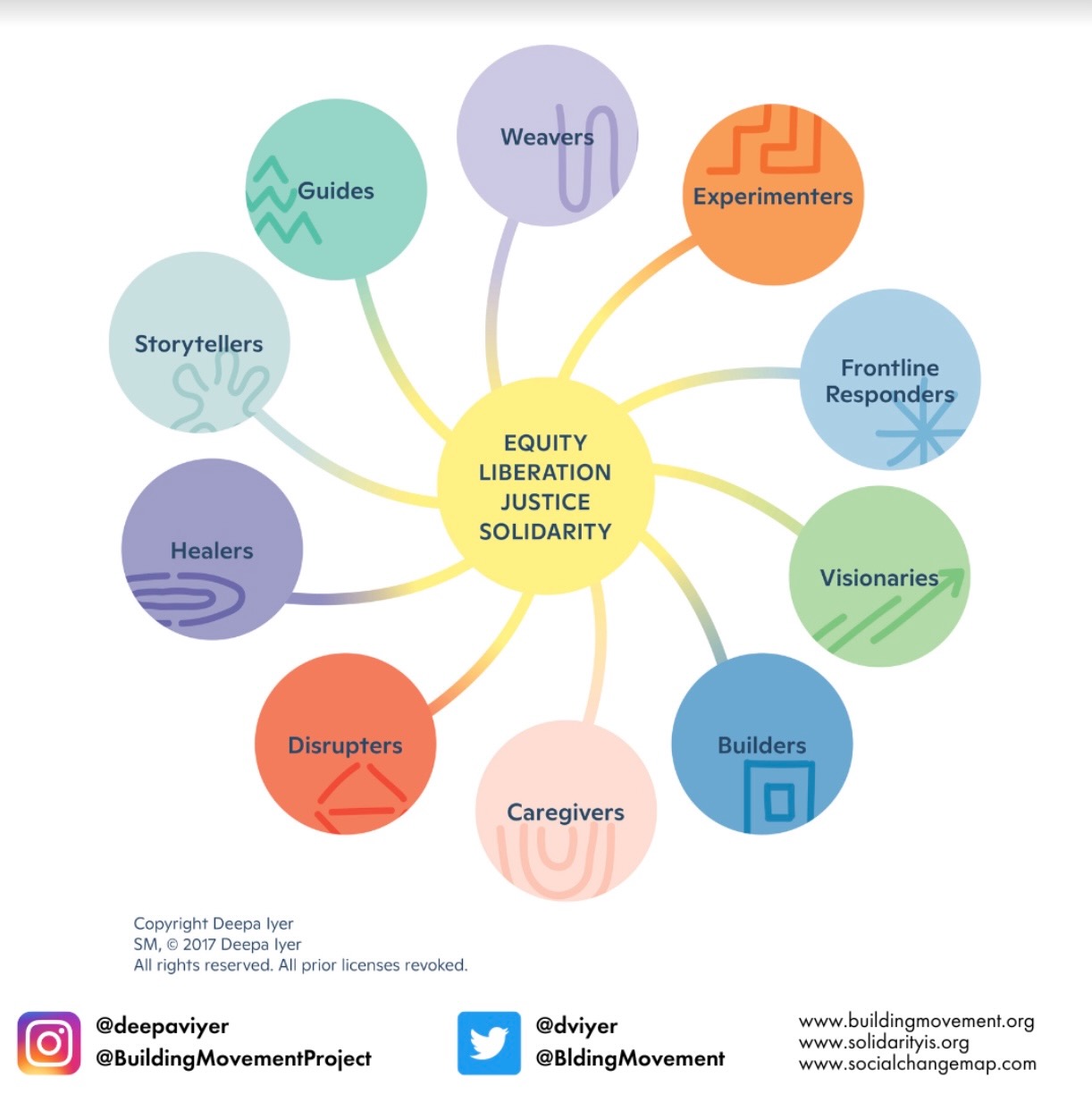.jpg)
With so much going on in the world right now, and an abundance of information coming from a multitude of places, it can be hard to know what role we play in the pursuit of equity and belonging. As a facilitator, or leader in an organization, it can be even more difficult to know how to provide groups with the tools and resources they need to respond to injustice or create belonging in their own groups or organizations. I was recently listening to an interview with Deepa Iyer, a “South Asian American writer, lawyer, strategist, facilitator, and activist,” who was talking about a framework she developed called The Social Change Ecosystem Map. Originally created in 2017, the framework is premised on the idea that we are “more effective and more sustainable in our social change work when we build connections with others.” She described how “many of us play different roles in pursuit of equity, shared liberation, inclusion, and justice. And yet, we often get overwhelmed, lost, and burned out. Some of us are newcomers to ongoing social change efforts and don’t know where to start. Still others are catalyzed into action during a crisis in our community.” While no one tool solves all problems, Iyer described this tool as “one humble offering” for how we can engage.
The Social Change Ecosystem Map has two components, represented as shared values, in the center, and the ten ways people and organizations generally show up, around the outside.

Photo Credit: BuldingMovement.org
From the interview, I understand the ten roles this way:
- Weavers: connect disparate groups and individuals, fostering collaboration and coalition-building. They build relationships, trust, and solidarity across communities.
- Experimenters: develop and test new strategies, tactics, and tools. They are willing to take risks, adapt, and learn from their efforts.
- Frontline Responders: are those directly impacted by social injustices who respond by advocating for their rights and those of their communities. They often lead grassroots movements, speaking from personal experience and demanding change.
- Visionaries: coordinate grassroots movements and campaigns, bringing people together for collective action. They mobilize individuals, build momentum, and lead protests, rallies, and marches.
- Builders: work within political and legal systems to create and change laws and policies that promote social justice. They often lobby for legislative reform and engage in advocacy work.
- Caregivers: invest their own resources in supporting social change efforts. These resources can include financial contributions, time, expertise, or access to networks that can mobilize support.
- Disrupters: use nonviolent methods to challenge systemic injustices directly. They may engage in civil disobedience, protests, sit-ins, and other forms of direct action to draw attention to issues and demand change.
- Healers: offer mental, emotional, and physical support to individuals and communities affected by trauma and injustices. They provide essential services, including counseling, healthcare, and community care.
- Storytellers: use various mediums, including journalism, social media, and art, to bring attention to social issues, share experiences, and create narratives that inspire action.
- Guides: raise awareness, provide education, and develop the knowledge and skills of individuals and communities. They create spaces for critical dialogue and offer training on social justice issues and activism.
Understanding ourselves and our work in the context of an ecosystem means recognizing that there is an intricate web of relationships between people, communities, and institutions. We are not the responsible for the whole ecosystem AND we have a role to play. While our roles may change over time, and may depend on the situation, mapping ourselves onto that ecosystem helps focus our time, energy, and resources in more tangible, accessible, meaningful, and sustainable ways – both for ourselves and the groups we lead or facilitate.
Learn more about the social change ecosystem map here. If you use the map as an educational tool, please let us know how it went!
---
Photo Credit: Pexels.com


